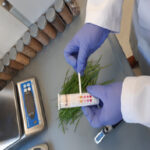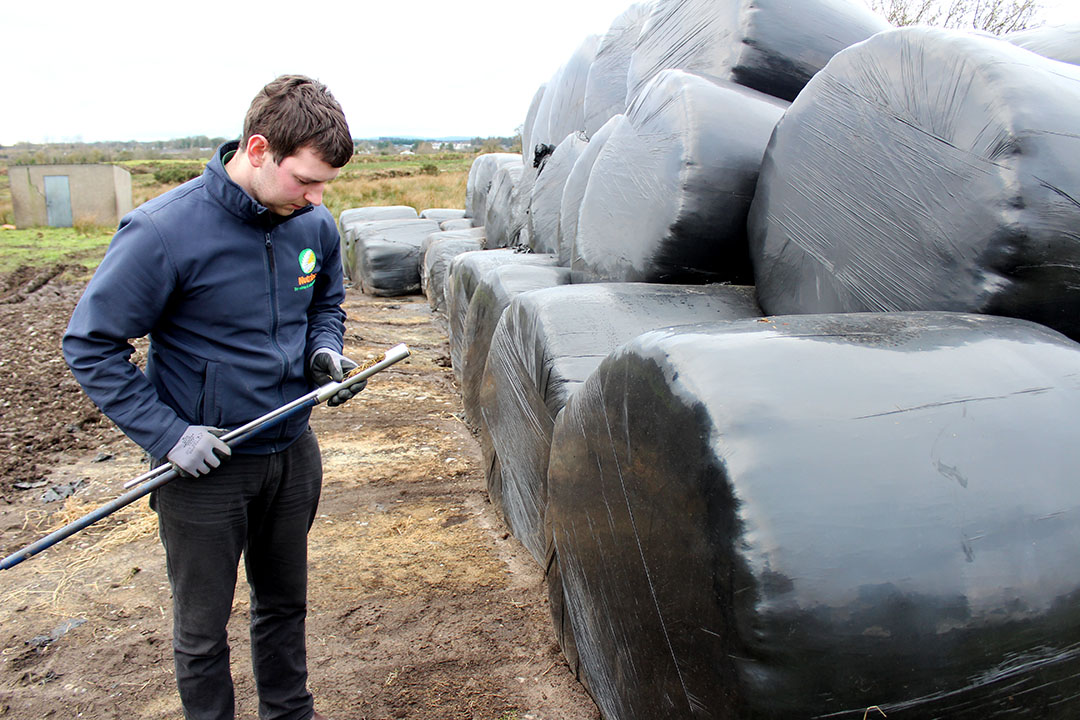We are committed to giving you the best information & advice to support your farming enterprise.
We have compiled a list of articles & publications on various topics.
Please wait while flipbook is loading. For more related info, FAQs and issues please refer to DearFlip WordPress Flipbook Plugin Help documentation.
Find out how our services can help you get the best from your farm.
Animal Husbandry
Ten Top Animal Health Tips for your Dairy Herd
The spring is a time where both animals and farmers are probably under the most pressure. The start of lactation for your cows and new calves brings with it huge challenges around animal health management. By focusing on these top ten areas on your farm, you can really improve animal health and performance.
Click here to download our Ten Top Animal Health Tips for your Dairy Herd PDF – Download
Animal Nutrition
Feeding Hill Lambs
Considerations for meal feeding Hill Lambs
When to introduce?
The key issue here is transitioning the lamb’s reliance on milk to being capable of digesting meal and forage maintaining weight gain from a young age. The single best thing to kickstart this process is meal feeding. Introduction of meal to lambs as early as possible ensures thrive is maximised at the most efficient stage, slaughter weights are reached sooner, and fat covers will be better if a lamb is thriving faster. Lambs like cattle move through fat classes quicker with higher DLWG’s.
Click here to download our Considerations for meal feeding Hill Lambs PDF – Download
Forage Analysis
Pre-Ensilability Testing
Reduce the risk of poor quality preservation and know the right time for ensiling with our pre-ensilability testing.
Our pre-ensilability testing will enable you to manage the nitrogen content of your grass to reduce the risk of poor quality preservation and will give you scientific advice on crop suitability for ensiling.
 When ensiling silage the aim is to get the bacteria in the silage to convert the sugars available as quickly as possible to lactic acid to drop the pH of the silage to around 4, this is where the silage is stable. The higher the sugar content the more food for the bacteria the quicker the pH drops. The target sugar content to ensure good fermentation is 3% or higher.
When ensiling silage the aim is to get the bacteria in the silage to convert the sugars available as quickly as possible to lactic acid to drop the pH of the silage to around 4, this is where the silage is stable. The higher the sugar content the more food for the bacteria the quicker the pH drops. The target sugar content to ensure good fermentation is 3% or higher.
High Nitrate levels in grass are bad as they increase the buffering capacity making it more difficult to get the pH level down. As grass grows it uses 2 units of Nitrogen per day, so if you applied 100 units per acre, it will take on average 50 days for this fertiliser to be used up.
If your nitrate test reading is high, the most likely cause is that not enough time has elapsed from the spreading date.
Interpreting your silage report
Grass Silage Analysis Explanation
Assessing a silage report:
There are 3 main components on the report:
Fermentation quality e.g. pH, Volatile Fatty Acids, Lactic Acid, Ammonia, WSC
Chemical composition: e.g. Crude protein, Ash, NDF, ADF
Nutritive value: e.g. DMD, ME
Click here to download our Interpreting your silage report PDF – Download
Soil Analysis
Soil Nutrition & Fertiliser Planning
Grassland Agro have developed a unique fertiliser plan format that provides a comprehensive fertiliser plan to their customers.
Click here to download our Soil Nutrition & Fertiliser Planning PDF – Download
Soil testing
Our soil testing gives you a detailed analysis of your soil and a clear personalised plan for treating your soil.
Only one in ten farms in Ireland have sub optimum soil fertility, which is why testing is so important to ensure you are treating your soil correctly.
At Nutrias, we offer a range of soil analysis options which provide information on the health of your soil and the nutrients it contains.
This analysis will allow us to provide you with a clear, individual plan on how you should treat your soil after the test. This efficient way of treating your soil will result in the cost effective use of lime, fertlisers and trace elements.
Some of the test results include pH, lime requirements as well as phosphorus and potassium levels with mineral options also available.
We advise that your aim to test your soil every three to four years and would advise that it is carried out in late autumn or early spring. Use a soil auger to sample a 10cm depth on average and aim to have 15 cores per sample for accurate representation.
We would advise take samples from across the field – do not take samples in a straight line but rather in the shape of a ‘W’ as this will give you a uniform representation of the field being sampled.
Soil analysis can be organised through your local Homeland Branch or by contacting one of our Farm Commercial Specialists.

Farm Commercial Specialists
Working closely with our farmers to deliver solutions and add value.
Our team are on the ground to deliver the best nutritional and product advice for your farm.

Find your nearest stockist
Contact our Farm Commercial Specialists and Homeland team who are on hand to provide support and advice. We pride ourselves on our personal customer service based on sound expertise.